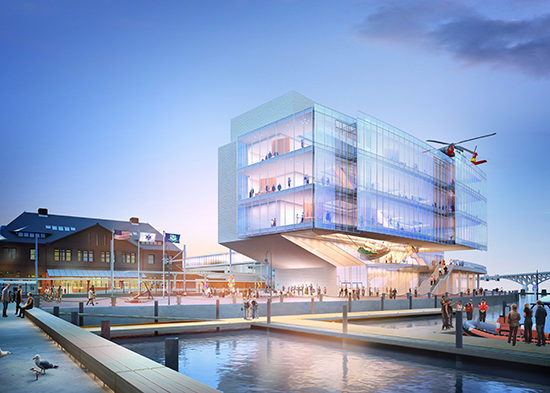
Sustainable and resilient design principles are inherent in everything that we design. We work with our clients to determine how environmentally beneficial design can enhance their particular project while incorporating their priorities. Our integrated approach strives to bring architects, consultants, engineers and clients out of their respected silos to explore strategies that benefit both the design intent and building performance. Our approach to sustainable and resilient design is founded in four major areas: water, ecology and site, energy, building skin and human systems (materials, health and productivity).
Here are some characteristics to consider for resilient design:
Resourcefulness: Make the most of the available resources on the site such as rain and sea water, solar resources and utilizing the site and its particular characteristics to one’s advantage.
Robust: Make sure the design has the ability to withstand shocks/stressors, such as passive design principles of optimized orientation, shading, a high performance envelope, greenery and impervious surfaces.
Redundant: Provide spare capacity in building systems to minimize single points of failure as well as renewable energy systems and energy storage.
Flexibility and Integration: Be responsive to change and have the ability to evolve over time, not just for the building itself, but also for the programs and research being conducted.
Throughout the design process, we continually assess sustainable and resilient strategies against established goals, LEED status, budget and design intent. By working with not only our engineers, but also product and system manufacturers, we can obtain accurate system performance data, cost information and constructability reviews resulting in more accurate energy modeling and design documents.
In later phases of design, our focus shifts from the specific design of systems and strategies to the operation of the building, which has an enormous impact on energy use as well as the productivity and health of the occupants. We use energy models to assess the impact of future occupant behavior, or climate change on energy use. Educating students, faculty, staff and administration about the sustainable strategies will raise awareness about how the building use impacts sustainable goals. By including electrical metering during design, energy use can be measured and displayed back to the building’s occupants. Ultimately, the building itself, as well as its landscape, can become a didactic tool supporting the building’s goals.
For best practices and detailed strategies for improving the resilience of new and existing buildings, the AIA/Boston Society of Architects, through funding from Barr Foundation, conducted a report to create a better understanding of the strategies and specific measures that can reduce the vulnerability to climate change. The scope of the report includes a review of national and international programs, initiatives and activities related to improving the resilience of existing buildings in Boston to climate change impacts.


